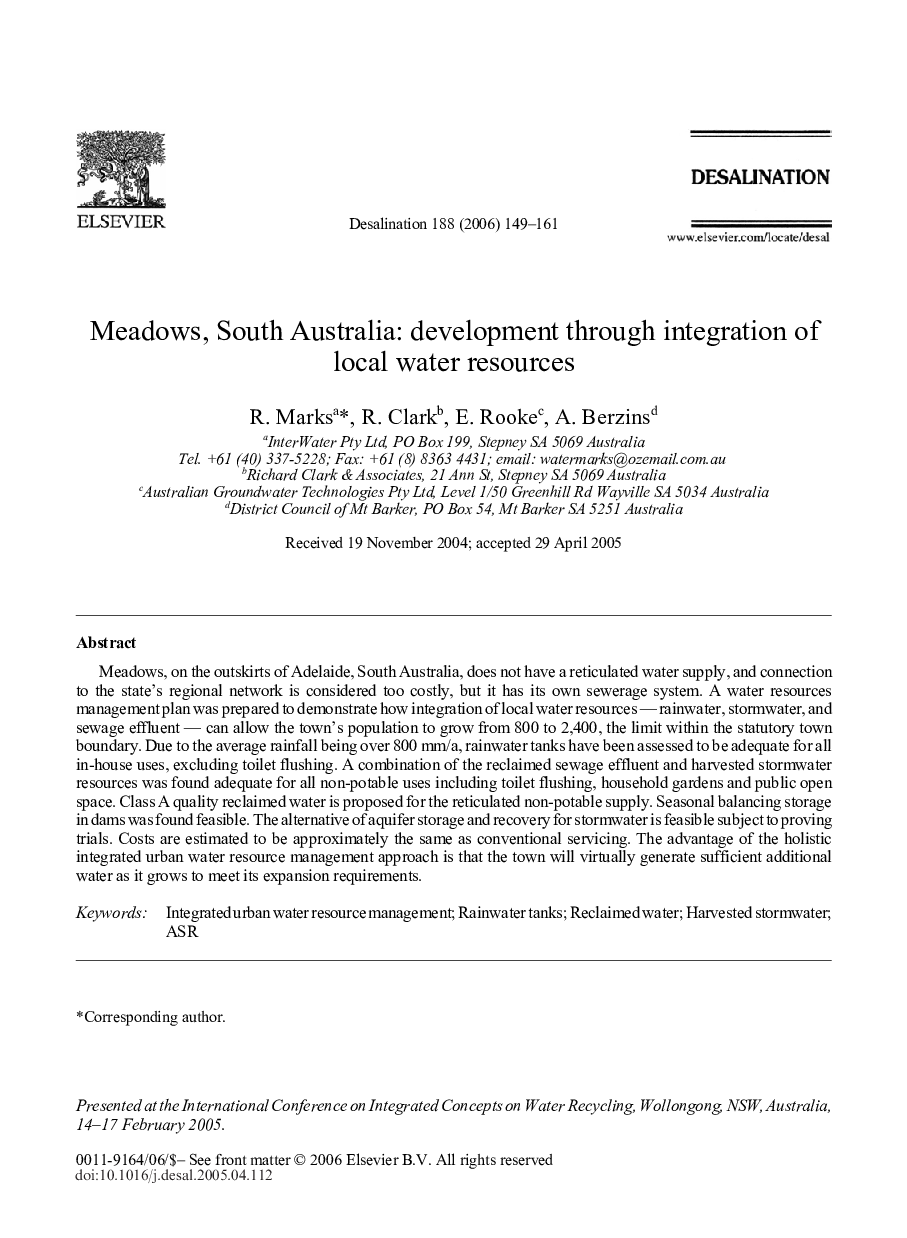| Article ID | Journal | Published Year | Pages | File Type |
|---|---|---|---|---|
| 629194 | Desalination | 2006 | 13 Pages |
Abstract
Meadows, on the outskirts of Adelaide, South Australia, does not have a reticulated water supply, and connection to the state's regional network is considered too costly, but it has its own sewerage system. A water resources management plan was prepared to demonstrate how integration of local water resources - rainwater, stormwater, and sewage effluent - can allow the town's population to grow from 800 to 2,400, the limit within the statutory town boundary. Due to the average rainfall being over 800 mm/a, rainwater tanks have been assessed to be adequate for all in-house uses, excluding toilet flushing. A combination of the reclaimed sewage effluent and harvested stormwater resources was found adequate for all non-potable uses including toilet flushing, household gardens and public open space. Class A quality reclaimed water is proposed for the reticulated non-potable supply. Seasonal balancing storage in dams was found feasible. The alternative of aquifer storage and recovery for stormwater is feasible subject to proving trials. Costs are estimated to be approximately the same as conventional servicing. The advantage of the holistic integrated urban water resource management approach is that the town will virtually generate sufficient additional water as it grows to meet its expansion requirements.
Keywords
Related Topics
Physical Sciences and Engineering
Chemical Engineering
Filtration and Separation
Authors
R. Marks, R. Clark, E. Rooke, A. Berzins,
